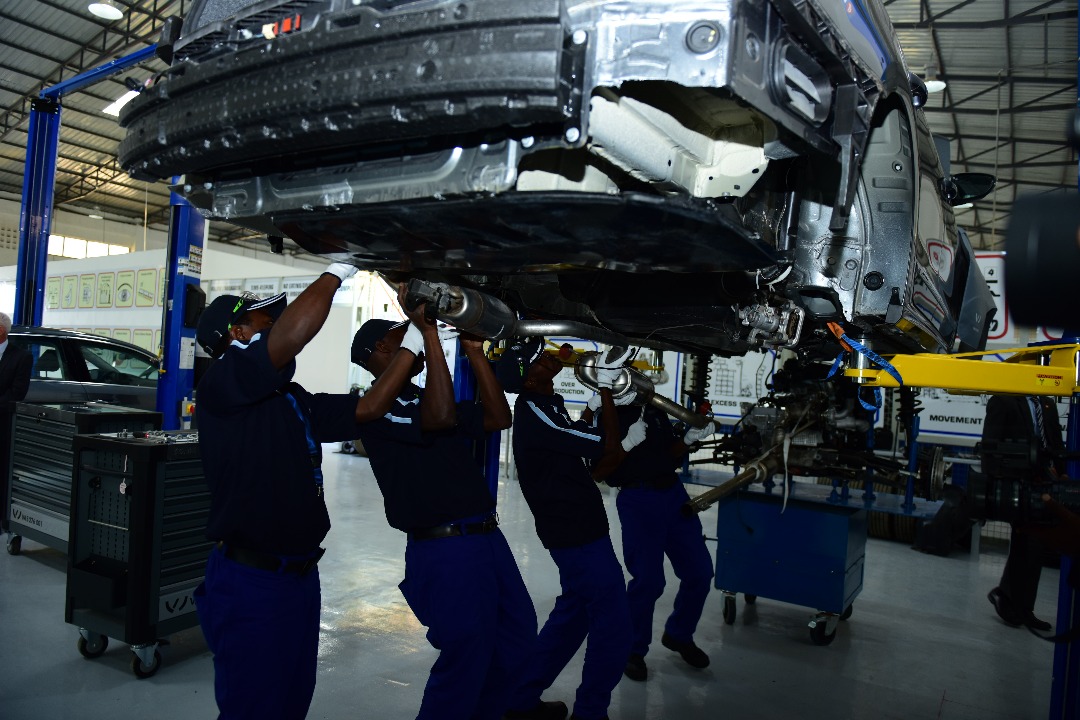
Volkswagen assembly plant is one of those businesses that were newly created giving more Rwandans jobs
The National Institute of Statistics of Rwanda (NISR) has indicated that Rwanda is on the right track in bridging the unemployment gap.
In May 2017, NISR released the labor force survey whereby it was indicated that unemployment rate in Rwanda actually is 13.2% not 2.5% as earlier stated.
The latest labor force survey indicates that Rwanda is now registering positive performances.
On Thursday, it was indicated that Rwanda managed to create over 200, 000 jobs between 2017- 2018, with a large percentage of them being off farm jobs, according to the labor force survey.
This will back up the country’s target of creating 1.5 million off-farm jobs in the next seven years and at least 200,000 jobs annually.
The second labor survey presented this week showed that Rwanda created 166,000 off farm jobs representing 81% compared to 40,000 in on-farm jobs equivalent to 19% in 2017-2018.
This achievement was partly caused by the country witnessing a steady growth in new businesses creation according to the fifth integrated Household Living Conditions Survey (EICV5) which was launched this Thursday December 6, 2018.
“By all means we see the momentum of job creation from ten years ago is still progressing, and this should ideally translate into better living conditions and poverty reduction,” said Yussuf Murangwa, the Director General of NISR.
The construction led other segments of employment with a contribution of 25%, despite facing a shock in the profitability due to low demand in housing and mortgage loans.
Other employment sectors which increased jobs include manufacturing, accommodation and food industry.
In order to understand these statistics better, Murangwa said that NISR will conduct four quarterly labor surveys, instead of two annually.
“Starting next year we will conduct the survey in February, May, August and November so as to capture issues of employment across the year,” he said.
However the NISR says that while on the policy level these jobs created are impressive, there are underlying issues of productivity, quality and sustainability which needs to be addressed along the way.
The EICV5 report showed that the number of workers totaled 5,825,000, with female workers accounting for about 53.5%, which is almost the same as their share in the working age population of 16-35years.


